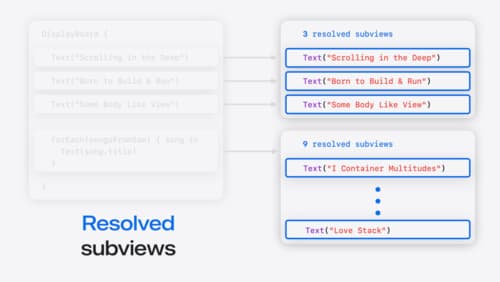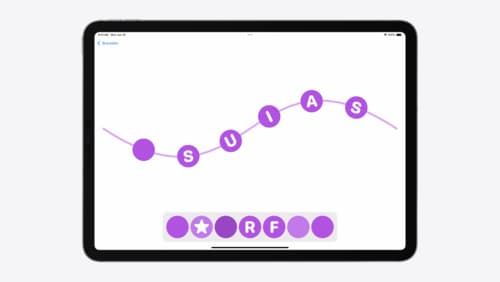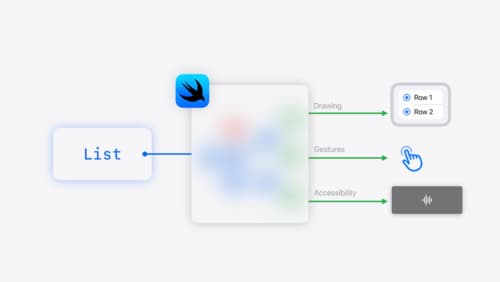swiftUI dataflow
Asked on 2024-10-02
1 search
SwiftUI data flow is a key concept in building apps with SwiftUI, as it emphasizes a declarative approach to UI development. In SwiftUI, views are state-driven, meaning that when your view state changes, SwiftUI automatically updates the UI to reflect those changes. This eliminates the need for boilerplate code and reduces the likelihood of update bugs.
Here are some key points about SwiftUI data flow from the "SwiftUI essentials" session:
-
State Management: SwiftUI uses state to manage the internal data of a view. When you mark a view property with
@State, SwiftUI manages the storage and provides it back for the view to read and write. This allows the view to react to changes in its state and update accordingly. -
Bindings: A binding creates a two-way reference to the state of another view. This is useful for creating interactive components where changes in one view need to be reflected in another.
-
View Composition: SwiftUI views are value types defined using structs, which are descriptions of what the current state of the UI should be. This allows for efficient data structures and performance optimization, as views are not long-lived object instances.
-
Dependency Tracking: SwiftUI keeps track of dependencies between views and their data. When data changes, SwiftUI updates the views that depend on that data, ensuring that the UI remains consistent with the underlying state.
For more detailed information, you can refer to the SwiftUI essentials session, which covers these concepts in depth.

Demystify SwiftUI containers
Learn about the capabilities of SwiftUI container views and build a mental model for how subviews are managed by their containers. Leverage new APIs to build your own custom containers, create modifiers to customize container content, and give your containers that extra polish that helps your apps stand out.

Enhance your UI animations and transitions
Explore how to adopt the zoom transition in navigation and presentations to increase the sense of continuity in your app, and learn how to animate UIKit views with SwiftUI animations to make it easier to build animations that feel continuous.

SwiftUI essentials
Join us on a tour of SwiftUI, Apple’s declarative user interface framework. Learn essential concepts for building apps in SwiftUI, like views, state variables, and layout. Discover the breadth of APIs for building fully featured experiences and crafting unique custom components. Whether you’re brand new to SwiftUI or an experienced developer, you’ll learn how to take advantage of what SwiftUI has to offer when building great apps.
